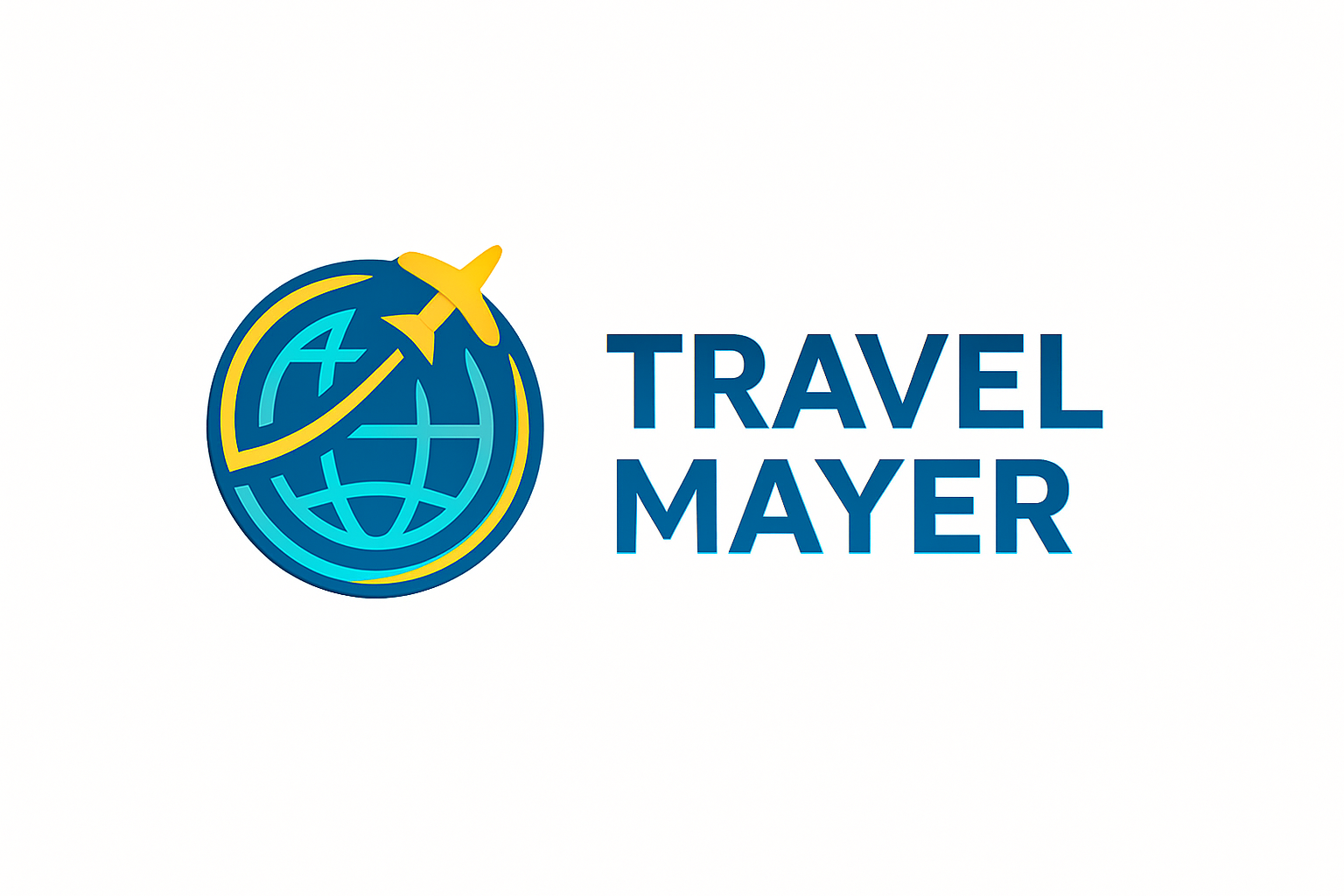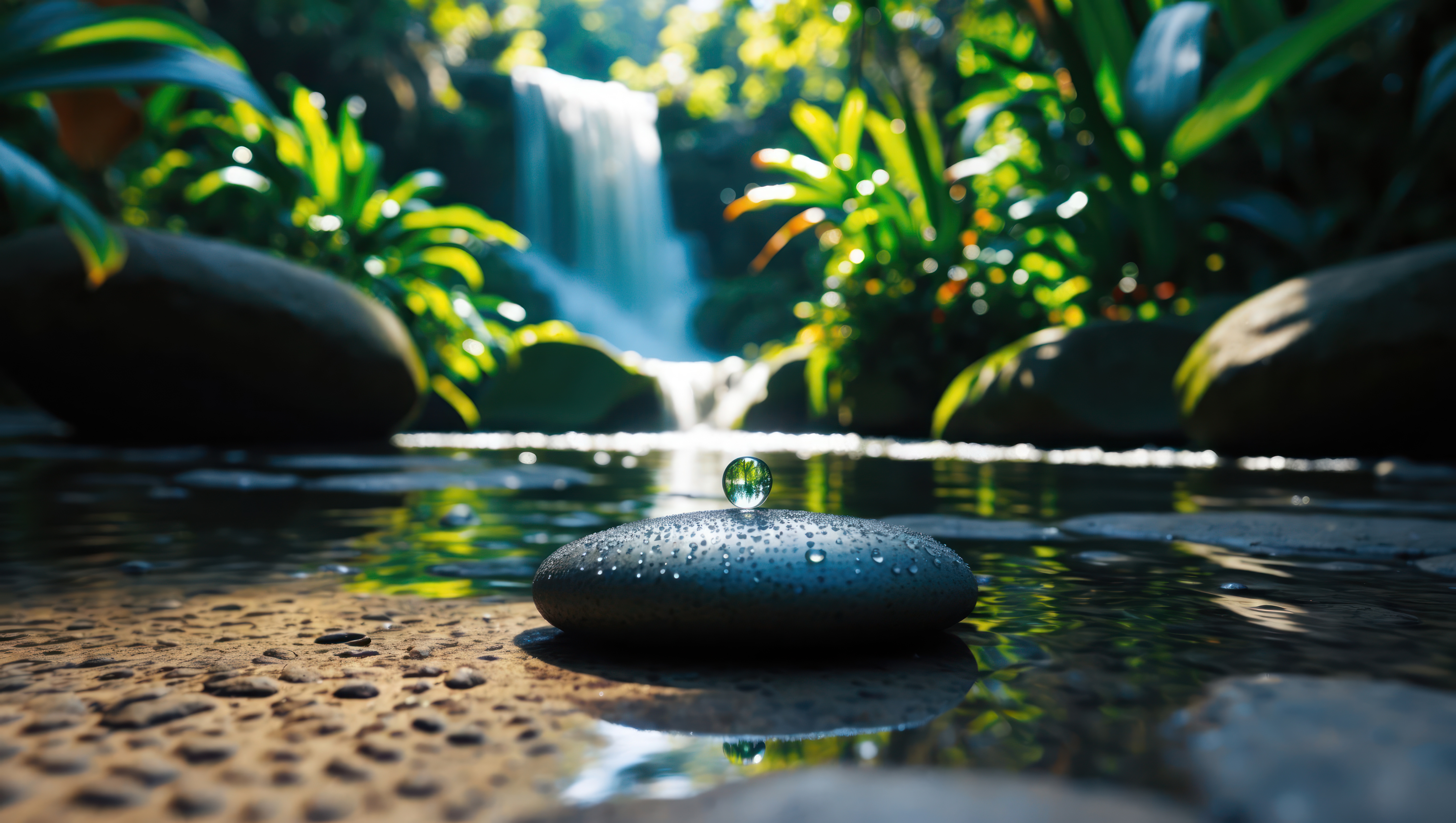Have you ever felt exhausted after a long-haul flight? Jet lag can be a real challenge when traveling across multiple time zones. The good news is that there are strategies to help minimize its impact.

By adopting certain travel wellness strategies, you can reduce the effects of jet lag and arrive at your destination feeling refreshed. In this article, we'll explore some effective ways to make your next long-distance trip a success.
Key Takeaways
- Understand the causes of jet lag and its effects on the body
- Learn how to prepare your body before a long-haul flight
- Discover in-flight strategies to minimize jet lag
- Find out how to adjust to a new time zone quickly
- Explore additional tips for a smooth recovery after arrival
The Science Behind Jet Lag and Travel Fatigue
The phenomenon of jet lag occurs when the body's natural rhythms are out of sync with the local time at the destination. This desynchronization affects travelers in various ways, depending on the number of time zones crossed and the direction of travel.
What Causes Jet Lag Physiologically
Jet lag is caused by the disruption of the body's circadian rhythms, which are regulated by an internal clock that responds to light and darkness. When traveling across time zones, this internal clock takes time to adjust, leading to a mismatch between the body's physiological processes and the local time.
How Circadian Rhythms Get Disrupted
The disruption occurs because the body's internal clock is set to the original time zone. Upon arrival at a destination in a different time zone, the external light-dark cycle conflicts with the internal circadian rhythm, causing sleep disturbances and other symptoms associated with jet lag.
Common Symptoms and Their Duration
Common symptoms of jet lag include fatigue, insomnia, digestive problems, and decreased alertness. The duration of these symptoms varies depending on the individual and the number of time zones crossed. Generally, it takes about one day to adjust for each time zone crossed.
SymptomsDurationPrevention StrategiesFatigue1-3 daysStay hydrated, avoid heavy mealsInsomnia1-2 daysAdjust sleep schedule before travelDigestive problems2-4 daysAvoid heavy meals during travelLong-Distance Travel Without Jet Lag – Is That Possible?
Traveling long distances without experiencing jet lag is a dream for many, but is it achievable? The answer lies in understanding the factors that contribute to jet lag and implementing strategies to minimize its impact.
Setting Realistic Expectations
It's essential to understand that completely eliminating jet lag might not be possible, but its effects can be significantly reduced. Long-haul flight advice often includes tips on adjusting sleep patterns before travel, staying hydrated, and being physically active.
By setting realistic expectations, travelers can better prepare themselves for the challenges of long-distance travel. This includes understanding that some level of fatigue is normal, but there are ways to minimize it.
Factors That Influence Jet Lag Severity
Several factors influence the severity of jet lag, including age, physical condition, and the direction of travel. Understanding these factors can help travelers take proactive steps to reduce jet lag's impact.
Age and Physical Condition
Older travelers may find it more challenging to recover from jet lag due to decreased physical resilience. Staying physically active and maintaining a healthy lifestyle can help minimize jet lag effects.
Direction of Travel (East vs. West)
Traveling east tends to be more challenging than traveling west because it requires advancing one's sleep schedule, which can be difficult. Travel tips often suggest adjusting sleep schedules before traveling east to mitigate this effect.
The Psychological Component of Jet Lag
The psychological aspect of jet lag should not be underestimated. Stress and anxiety about travel can exacerbate feelings of fatigue. Practicing relaxation techniques and staying positive can help manage the psychological impact of jet lag.
By understanding the factors that influence jet lag and taking proactive steps, travelers can significantly reduce its impact. While completely avoiding jet lag might be challenging, minimizing jet lag is definitely achievable with the right strategies and mindset.
Pre-Travel Preparation: Setting Yourself Up for Success
Preparing for long-distance travel involves more than just packing your bags; it requires strategic planning to minimize jet lag. By making a few simple adjustments before your trip, you can significantly reduce the impact of crossing time zones.
Gradual Sleep Schedule Adjustments
One of the most effective ways to minimize jet lag is by gradually adjusting your sleep schedule. This can be achieved by making small changes to your sleep and wake times a few days before your trip.
One-Hour Shifts Starting 3-5 Days Before
Begin by shifting your sleep schedule one hour every few days before your trip. For example, if you're traveling east, try going to bed one hour earlier each night. This gradual adjustment can help your body adapt to the new time zone.
Using Sleep Tracking Apps
Utilize sleep tracking apps to monitor your sleep patterns and ensure you're getting quality rest. Apps like Sleep Cycle or Pillow can provide valuable insights into your sleep and help you make necessary adjustments.
Strategic Flight Booking Tips
When booking your flight, consider the timing to minimize jet lag. Opt for flights that arrive at your destination during the daytime, making it easier to stay awake until your local bedtime.
Essential Packing for Jet Lag Prevention
Packing the right items can also help reduce jet lag. Consider including sleep accessories and comfort items in your luggage.
Sleep Accessories
Items like eye masks, earplugs, and travel pillows can greatly enhance your ability to sleep on the plane. These accessories help create a comfortable sleep environment, even in a crowded cabin.
Comfort Items
Bringing along comfort items such as a favorite blanket or a cozy sweater can also help you relax during the flight. These small comforts can make a big difference in your ability to rest.
By implementing these pre-travel strategies, you can set yourself up for success and enjoy a more comfortable journey. As "The key to a successful trip is preparation", taking the time to prepare can make all the difference.
In-Flight Strategies to Minimize Jet Lag
In-flight strategies can significantly reduce the impact of jet lag on your travel experience. By making a few simple adjustments during your flight, you can arrive at your destination feeling more refreshed and ready to go.
Optimal Seating Choices for Better Sleep
Choosing the right seat on a plane can greatly impact your ability to sleep during a long-haul flight. Window seats are often preferred because they allow you to lean against the window and avoid being disturbed by other passengers. Additionally, seats in quieter areas of the plane, such as near the front or in exit rows, can also enhance your sleep quality.
Hydration and Nutrition During Long Flights
Staying hydrated and eating the right foods during a long flight are crucial for minimizing jet lag. It's essential to drink plenty of water and avoid caffeinated and alcoholic beverages that can dehydrate you.
Foods to Seek and Avoid
Opt for nutrient-rich snacks like nuts, fruits, and energy bars. Avoid heavy meals and those high in salt and sugar. A balanced diet during your flight can help maintain your energy levels.
Hydration Schedule
Drink water regularly throughout the flight. A good rule of thumb is to drink at least one glass of water per hour of flight time. You can also consider bringing a refillable water bottle with you.
https://www.youtube.com/watch?v=_SWaMXMeo6E
Movement and Stretching Exercises
Regular movement during a long flight can help prevent blood clots and stiffness, making you feel more comfortable upon arrival.
In-Seat Exercises
Simple exercises like ankle rotations, toe raises, and shoulder rolls can be done from the comfort of your seat. These exercises can help improve circulation and reduce muscle tension.
Walking and Standing Routines
Whenever possible, get up and walk around the cabin. Even a short walk up and down the aisle can make a big difference. Consider doing some simple stretches in the aisle or near your seat.
In-Flight StrategyBenefitsOptimal SeatingBetter sleep qualityHydration and NutritionReduced dehydration, maintained energyMovement and StretchingImproved circulation, reduced stiffnessSleep Management Techniques for Time Zone Transitions
To combat jet lag, understanding and implementing sleep management techniques is key. When traveling across multiple time zones, your body's internal clock is disrupted, leading to fatigue and other symptoms associated with jet lag. Effective sleep management can significantly reduce these effects, making your travel more enjoyable and productive.
The "Stay Awake Until Local Bedtime" Rule
One of the most effective strategies for adjusting to a new time zone is to stay awake until local bedtime. This approach helps your body quickly synchronize with the new environment. For instance, if you arrive at your destination in the afternoon, try to stay awake until the local bedtime. This might involve engaging in light physical activities or exploring your surroundings.
Benefits of Staying Awake: Helps regulate your circadian rhythms faster, reduces the feeling of jet lag.
Creating an Ideal Sleep Environment Away from Home
Creating a sleep-conducive environment is crucial, even when you're not at home. This involves controlling factors like temperature, noise, and light to simulate your usual sleep conditions as closely as possible.
Temperature and Noise Control
Maintaining a cool, quiet environment is essential for quality sleep. Use earplugs or a white noise machine if necessary, and adjust the room temperature to a comfortable level.
Blackout Solutions for Any Room
Light exposure can significantly affect your sleep. Using blackout curtains or an eye mask can help create a dark environment, signaling to your body that it's time to sleep.
Natural Sleep Aids vs. Medication
When it comes to sleep aids, travelers have the option of natural remedies or medication. Natural aids like melatonin can be effective, while medication might be considered for more severe cases of jet lag.
Melatonin Usage Guidelines
Melatonin is a hormone that regulates sleep-wake cycles. Taking a melatonin supplement can help adjust your sleep schedule to the new time zone. It's recommended to consult with a healthcare professional before starting melatonin.
When to Consider Prescription Options
In cases of severe jet lag, prescription sleep aids might be an option. However, these should be used under the guidance of a healthcare professional due to potential side effects and dependency risks.
By implementing these sleep management techniques, travelers can significantly reduce the impact of jet lag, making their journey more comfortable and enjoyable.
Light Exposure: Your Body's Most Powerful Time Cue
The human body relies heavily on light to regulate its circadian rhythms, making light exposure a key factor in adapting to new time zones. When traveling, especially across multiple time zones, managing light exposure can significantly mitigate the effects of jet lag. This involves understanding how to use natural sunlight and, if necessary, light therapy devices to adjust your body's internal clock.
Strategic Sunlight Exposure in New Time Zones
Exposure to sunlight at the right time can help your body adjust to the local time zone more quickly. The timing of sunlight exposure is crucial and depends on the direction of travel.
Morning Light for Eastward Travel
When traveling east, exposure to morning light helps advance your circadian clock, making it easier to wake up earlier. This is because morning light exposure signals to your body that it's time to be awake.
Evening Light for Westward Travel
Conversely, when traveling west, it's beneficial to be exposed to light in the evening, as this delays your circadian clock, helping you stay up later.
Light Therapy Devices and Apps
In addition to natural sunlight, light therapy devices and apps can be valuable tools in managing jet lag. These devices emit specific wavelengths of light that can help regulate your circadian rhythms.
Portable Light Therapy Options
There are various portable light therapy devices available that can be used during travel to help adjust your circadian rhythms. These devices are designed to be compact and user-friendly.
Light Exposure Apps and Their Effectiveness
Several apps are designed to help manage light exposure by providing personalized recommendations based on your travel itinerary. These apps can be a useful adjunct to light therapy devices.

Nutrition and Hydration Strategies for Beating Jet Lag
Beating jet lag isn't just about adjusting sleep patterns; it also involves making informed choices about what we eat and drink during travel. The right nutrition and hydration strategies can significantly reduce travel fatigue and help the body adapt more quickly to new time zones.
The Anti-Jet Lag Diet Protocol
Adopting a specific diet protocol before and during travel can help minimize jet lag. This involves adjusting meal times and food choices to align with the destination time zone.
Pre-Flight Eating Schedule
Starting a few days before travel, gradually adjust your meal schedule to match the eating times of your destination. This helps your body's internal clock begin to adjust.
Post-Arrival Meal Timing
Upon arrival, eating at local meal times can further help your body adjust to the new time zone. Avoid heavy meals close to bedtime and opt for light, balanced meals.
Caffeine, Alcohol, and Hydration Management
Managing caffeine, alcohol, and hydration is crucial during long-distance travel. These substances can significantly impact sleep quality and jet lag severity.
Strategic Caffeine Consumption
Caffeine can be used strategically to help stay awake during the day in the new time zone. However, it should be avoided in the hours leading up to bedtime to prevent sleep disruption.
Why Alcohol Worsens Jet Lag
Alcohol consumption during flights and at destination can worsen jet lag by disrupting sleep patterns and dehydrating the body. Limiting alcohol intake is advisable.
By implementing these nutrition and hydration strategies, travelers can take a proactive approach to minimizing jet lag and enjoy a smoother transition to their destination time zone.
Technology and Apps for Combating Jet Lag
Travelers can now leverage a variety of digital solutions to mitigate jet lag, making long-distance travel more enjoyable. With the rise of travel wellness strategies, numerous apps and devices have been developed to help manage jet lag.

Jet Lag Calculator Apps
Jet lag calculator apps are designed to help travelers adjust their sleep schedules to the new time zone. These apps provide personalized recommendations based on the traveler's flight itinerary and sleep patterns.
Some popular jet lag calculator apps include:
- Jet Lag Calculator by Timeshifter
- Travel Clock
- Jet Lag Rooster
Sleep Tracking Technology
Sleep tracking technology has become increasingly sophisticated, allowing travelers to monitor their sleep patterns and identify areas for improvement. Wearable devices and mobile apps can track sleep duration, quality, and stages.
Examples of sleep tracking technology include:
Device/AppFeaturesFitbitTracks sleep stages, duration, and qualitySleep CycleMonitors sleep patterns and wakes users during their lightest sleep phaseMeditation and Relaxation Apps for Travel
Meditation and relaxation apps can help travelers manage stress and anxiety associated with jet lag. These apps offer guided meditations, breathing exercises, and calming music to promote relaxation.
"Meditation is a powerful tool for managing stress and promoting relaxation during travel." - Dr. Sleep ExpertSome popular meditation and relaxation apps include:
- Calm
- Headspace
- Insight Timer
Conclusion: Making Long-Distance Travel More Enjoyable
Long-distance travel without jet lag is achievable with the right strategies. By understanding the science behind jet lag and implementing pre-travel preparation, in-flight strategies, and post-flight routines, travelers can minimize the effects of jet lag.
Effective travel tips include adjusting sleep schedules before traveling, staying hydrated, and managing light exposure. Utilizing technology, such as jet lag calculator apps and sleep tracking devices, can also aid in reducing jet lag.
By incorporating these tips into your travel routine, you can make long-distance travel more enjoyable and reduce the fatigue associated with crossing multiple time zones. With a little planning and preparation, you can arrive at your destination feeling refreshed and ready to explore.
FAQ
What are some effective ways to prevent jet lag when traveling long distances?
To prevent jet lag, consider adjusting your sleep schedule a few days before your trip, staying hydrated, and avoiding heavy meals during the flight. Additionally, exposure to natural light and using light therapy devices can help regulate your body's internal clock.
How can I adjust my sleep schedule to minimize jet lag?
Gradually adjust your sleep schedule 3-5 days before your trip by shifting your bedtime one hour earlier or later each day, depending on your travel direction. This can help your body adapt to the new time zone more easily.
Are there any specific foods or diets that can help alleviate jet lag?
While there isn't a specific "anti-jet lag" diet, eating a balanced meal and avoiding heavy, rich foods during the flight can help. Some research suggests that a diet rich in protein and complex carbohydrates can help regulate your body's internal clock.
Can exercise help reduce jet lag?
Yes, regular exercise can help reduce jet lag by improving your overall physical and mental well-being. Simple stretching exercises during the flight can also help reduce stiffness and improve circulation.
How can I manage my caffeine and alcohol intake to minimize jet lag?
To minimize jet lag, limit your caffeine intake to the morning and early afternoon, and avoid consuming it close to bedtime. Similarly, limit your alcohol intake during the flight and avoid it altogether close to bedtime, as it can disrupt your sleep patterns.
Are there any apps or technology that can help with jet lag?
Yes, there are several apps and devices available that can help with jet lag, including jet lag calculators, sleep tracking technology, and light therapy devices. These tools can help you adjust your sleep schedule, track your sleep patterns, and regulate your exposure to light.
Can melatonin supplements help with jet lag?
Melatonin supplements can help regulate your sleep-wake cycle and alleviate jet lag symptoms. However, it's essential to consult with a healthcare professional before taking melatonin, as it may interact with other medications or have side effects.









Comment (0)
Leave A Comment: